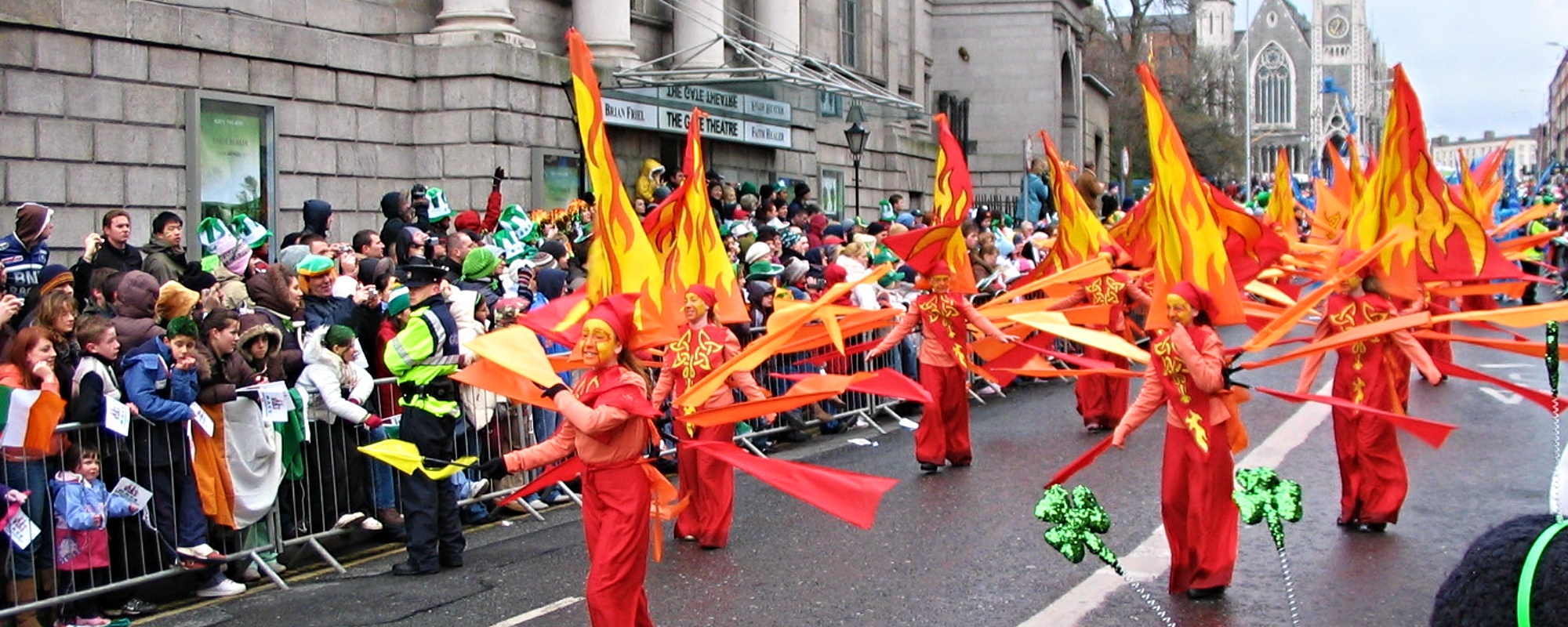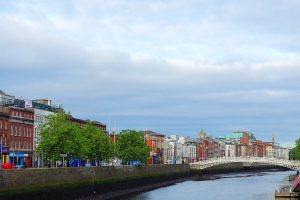Even if you haven’t been to Ireland before, the chances are that you have already heard about Saint Patrick’s Day.
It’s also called St. Paddy’s Day (not St. Patty’s Day), and it’s a celebration of the Irish spirit.
Experiencing the festive atmosphere on 17th March is definitely bucket-list material, so it’s a great idea to head to Ireland in the middle of March.
We enjoyed the St. Patrick’s Day celebrations many times when we lived in Ireland, so we put together a few tips on what to expect and how to get ready for your trip.
What It’s All About
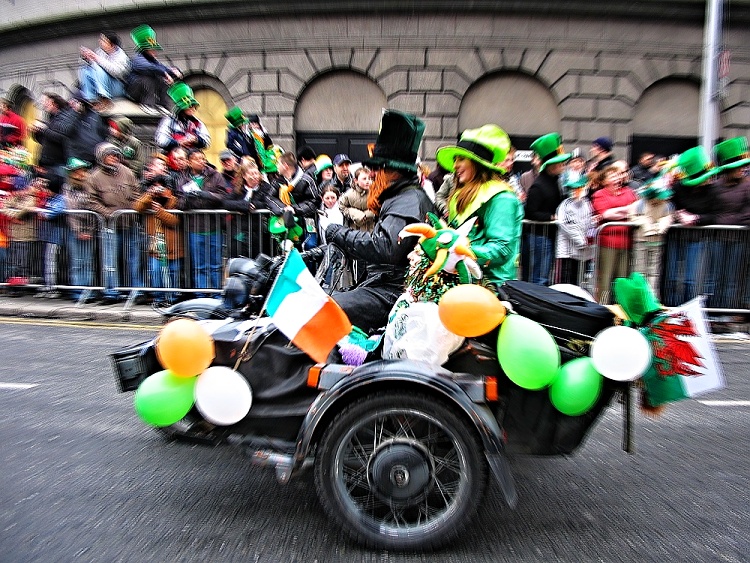
Saint Patrick is the foremost patron saint of Ireland and is given credit for bringing Christianity to the country.
17th March, the date of his death, is the day of celebrations of Saint Patrick and Christianity and also Irish culture and heritage in general.
Every year many places and attractions turn green, and there are parades and special events all over the world.
17th March is a national holiday in the Republic of Ireland and Northern Ireland, so most people don’t have to go to work and can enjoy the celebrations instead.
Expect Crowds
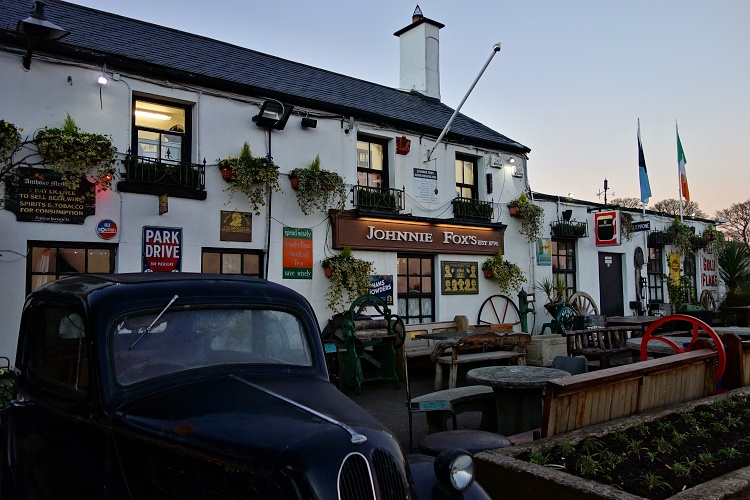
Most local people are off, and thousands of visitors from abroad come to Ireland for this occasion, so expect places to be busy – very busy.
Accommodations, restaurants, and pubs will be packed and noisy, and it will be challenging to escape the crowds.
Most pubs, especially in the city centre of Dublin, are so full that many people have to drink their pints outside.
If you don’t like busy events, head to some of the smaller Irish towns instead – you can get an authentic and less commercial experience there by celebrating with the locals, not just tourists.
Irish people are very friendly and easy to get into a conversation with, so you won’t feel alone even if you travel on your own.
Saint Patrick’s Festival
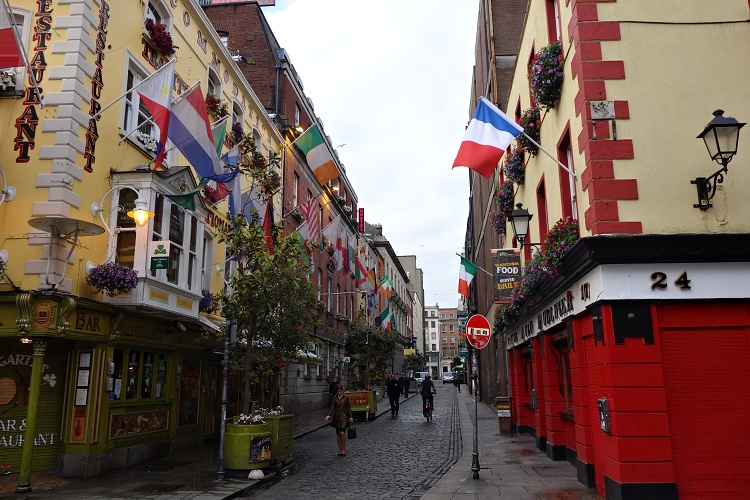
There is so much going on in Ireland around St. Patrick’s Day.
The St. Patrick’s Festival in Dublin usually starts a day before and ends a day or two after 17th March.
Check out the official website for more details.
We recommend arriving in Ireland a few days before St. Patrick’s Day and spending at least a few days in this beautiful country.
You will not only save money on airfares, which usually go up just before and after St. Patrick’s Day, but you will also be able to enjoy many special events related to the celebrations.
Many things are happening all around Ireland – such as parades, street performances, concerts, dancing, theatre, historic tours, activities for families, etc. – and there is something interesting for everyone.
Dublin Parade
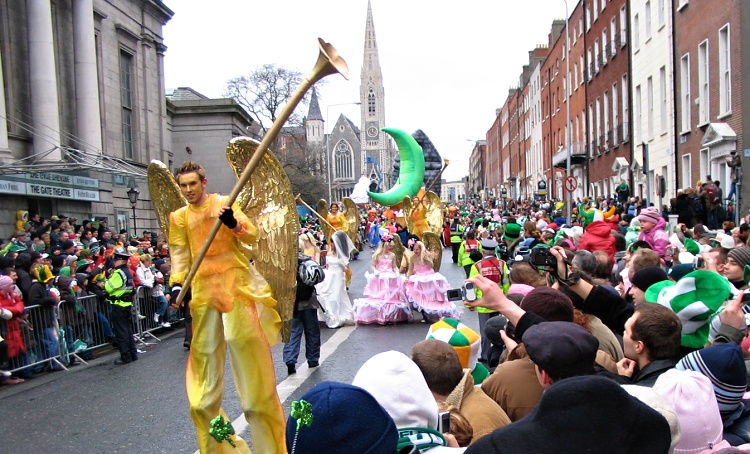
If you are in Dublin, the renowned St. Patrick’s Festival Parade is a must-see.
Colourful costumes, performers and bands from all over the world make a fantastic spectacle.
Thousands of visitors will arrive for the show, so get in early to secure a good viewing spot (or a window).
The procession walks through the city centre, and you can check the parade route here.
What to Wear
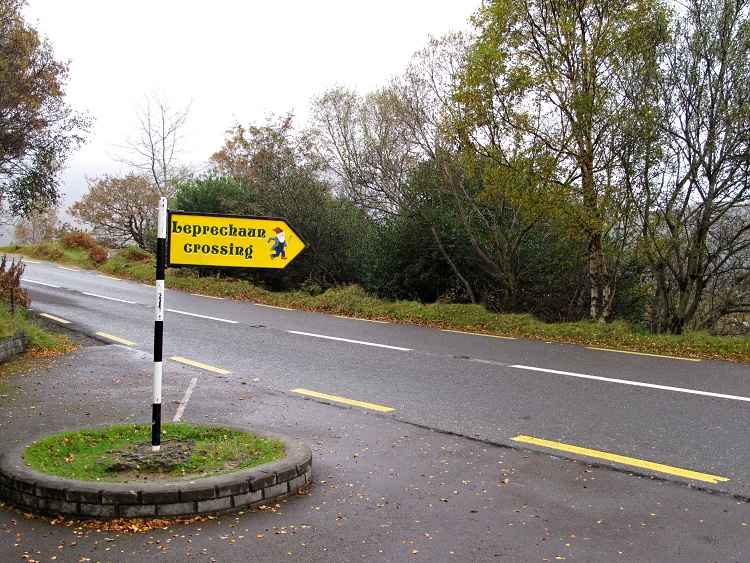
Make sure you wear something green – it doesn’t have to be clothing but just an accessory.
People used to believe that green made them invisible to leprechauns, local fairy creatures who would pinch anyone they would see.
Wearing the costume or at least the hat of a leprechaun will help you to get attention and make new friends quickly.
People also like to wear clothes or accessories with other Irish symbols, such as shamrock.
It’s believed that Saint Patrick used the shamrock to explain the Holy Trinity to those he preached to.
The colours of the Irish national flag – green, white and orange – are also popular.
It’s the creativity that is appreciated the most, so it’s the time to let your imagination go wild.
What to Eat and Drink
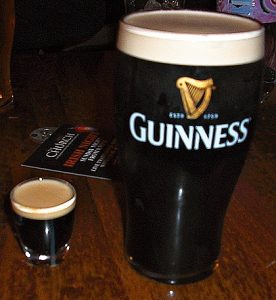
While St. Patrick’s Day is the celebration of all things Irish, it’s a perfect opportunity (or excuse?) to try some traditional Irish food and drinks.
Let’s start with Irish drinks that make a great conversation topic (not only) on St. Patrick’s Day.
You have to taste Guinness – the iconic Irish dry stout.
Don’t panic if you don’t like it – there are plenty of alternatives.
You can try a Baby Guinness – a shooter looking like a miniature pint of Guinness.
It’s great for those with a sweet tooth because it’s made of a coffee liqueur (Kahlua, Tia Maria, etc.) topped with an Irish cream (usually Baileys).
Other popular choices include whiskey, cider, Baileys, poitin or Irish coffee.
Traditional Irish food might not be as sophisticated as other cuisines, but it includes many tasty meals.
Don’t miss some of the fresh lamb, fish or seafood meals, while hearty stews and soups will warm you up on a cold day.
Traditional Irish breakfast (also called the fry) is always a good idea – not only in the morning but during any other time of the day.
Final Tips
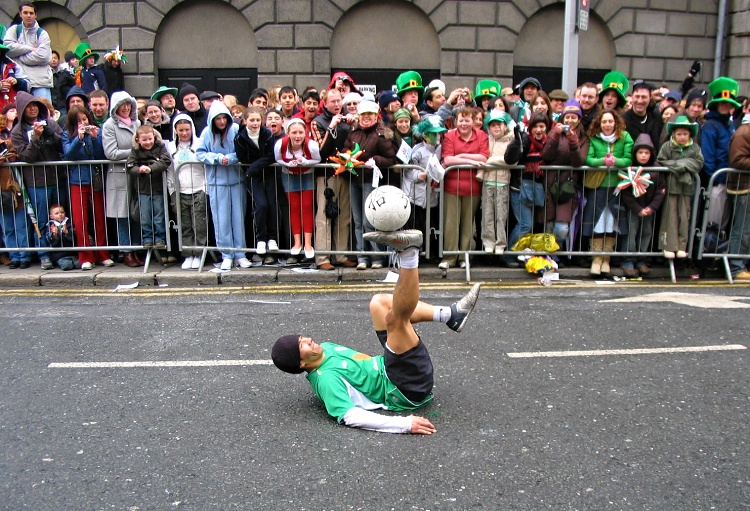
Saint Patrick’s Day is a great experience, and Ireland is the place to be on 17th March.
Be prepared for any weather because it might change a few times during the day.
We recommend wearing layers.
But don’t worry if you aren’t lucky with the weather – you can easily find shelter in any of the welcoming Irish pubs.
Even if you can’t travel to Ireland, you can still celebrate St. Patrick’s Day by attending some events in your country (they will probably be some) or even at home.
Go green, download Irish music, get some Irish drinks and food, invite a few friends and enjoy the festive atmosphere.
You might even attempt Irish dancing if you are in the right mood.
The 17th March is the time to have craic (fun) and enjoy life.
How do you celebrate St. Patrick’s Day?
Did you like this article? Please share it, so more people can find it helpful.

